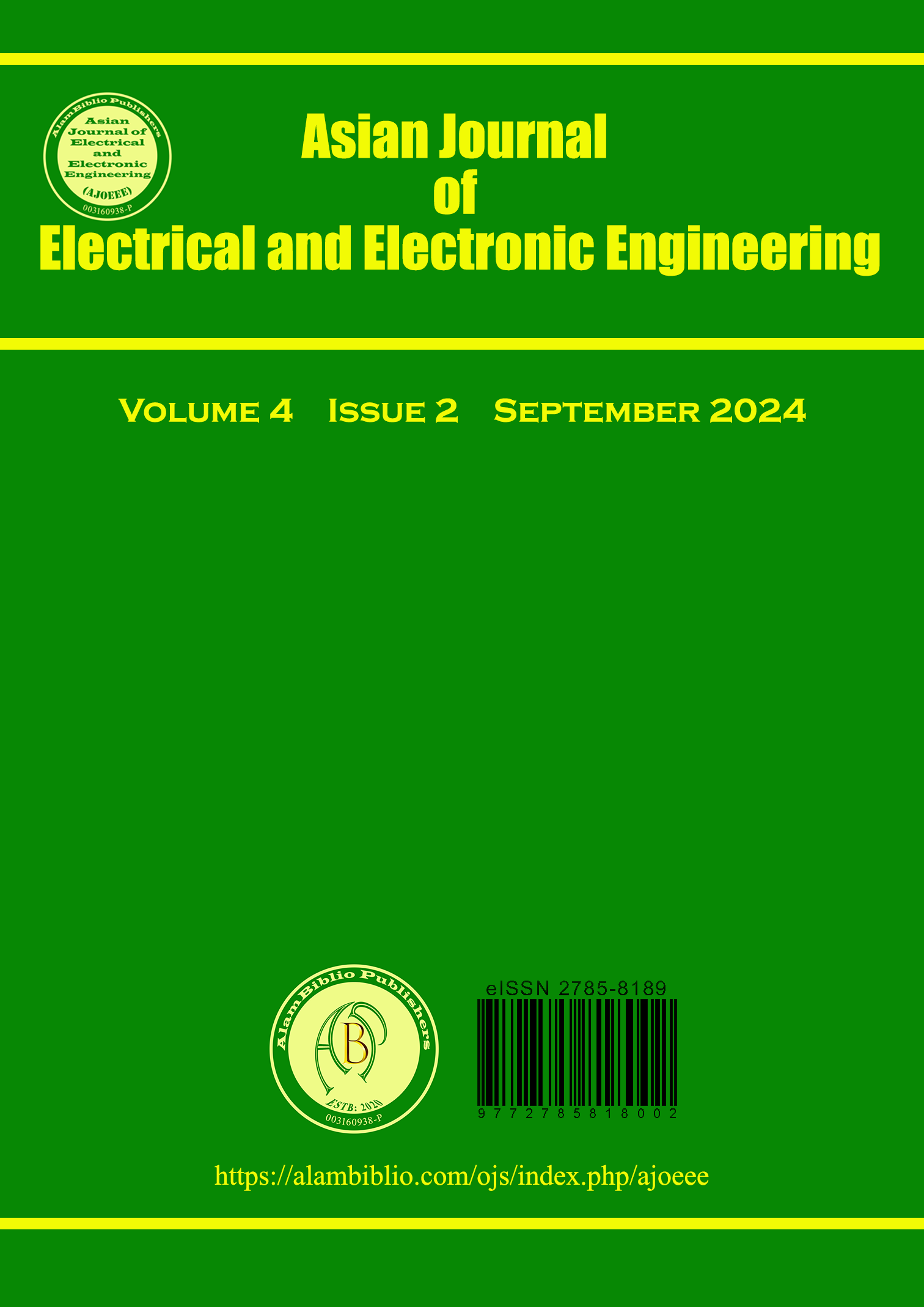Evaluation of Classification Algorithms in Tracing Malicious Telephone Numbers
DOI:
https://doi.org/10.69955/ajoeee.24.v4i2.64Keywords:
Telecommunications, classification, machine learning, networkAbstract
Mobile phones and telecommunications networks have recently played an important role in modern society. They are dispensable parts of our lives as they facilitate the way we communicate. However, apart from their benefit, their proliferation has some drawbacks as telephone networks can be exploited. For example, commercial calls can be made repeatedly to advertise companies’ products. These calls annoy customers because they promote products without considering customers’ interests. These unexpected calls not only cause a negative impact on the networks but also disturb mobile phone users. To confront this problem, the network administrators need some methods to detect the phone numbers that are used to make the harassment. Therefore, we proposed a solution based on machine learning classification models. Then the performance of some models, namely K-Nearest Neighbors, Decision Tree, and Logistic Regression, is compared. By applying the machine learning models, network administrators can identify and restrict malicious telephone numbers.
Downloads
References
[1] Hicham, Magri & Abghour, Noreddine & Ouzzif, Mohammed. (2015). 4G System: Network Architecture and Performance.
[2] Zaame, I. & Mazri, Tomader & Elrhayour, A.. (2020). 5G: Architecture Overview And Deployments Scenarios. ISPRS - International Archives of the Photogrammetry, Remote Sensing and Spatial Information Sciences. XLIV-4/W3-2020. 435-440. 10.5194/isprs-archives-XLIV-4-W3-2020-435-2020. https://doi.org/10.5194/isprs-archives-XLIV-4-W3-2020-435-2020 DOI: https://doi.org/10.5194/isprs-archives-XLIV-4-W3-2020-435-2020
[3] Tataria, Harsh & Shafi, Mansoor & Molisch, Andreas & Dohler, Mischa & Sjoland, Henrik & Tufvesson, Fredrik. (2021). 6G Wireless Systems: Vision, Requirements, Challenges, Insights, and Opportunities. Proceedings of the IEEE. PP. 1-34. 10.1109/JPROC.2021.3061701. https://doi.org/10.1109/JPROC.2021.3061701 DOI: https://doi.org/10.1109/JPROC.2021.3061701
[4] Hayashi, Toshiki. (2012). Evolved Packet Core (EPC) network equipment for Long Term Evolution (LTE). Fujitsu scientific & technical journal. 48.
[5] ETSI TR 101 292, Public Switched Telephone Network (PSTN), 1999-09.
[6] Sauter, Martin. (2021). 5G New Radio (NR) and the 5G Core. https://doi.org/10.1002/9781119714712.ch6 DOI: https://doi.org/10.1007/978-3-658-36963-7_2
[7] Sah, S. Machine Learning: A Review of Learning Types. Preprints 2020, 2020070230. https://doi.org/10.20944/preprints202007.0230.v1 DOI: https://doi.org/10.20944/preprints202007.0230.v1
[8] A. Bahaa, M. Shehata, S. M. Gasser, S. El-Mahallawy, "Call Failure Prediction in IP Multimedia Subsystem (IMS) Networks," in Applied Science Journal, 2022,12,8378. https://doi.org/10.3390/app12168378 DOI: https://doi.org/10.3390/app12168378
[9] ETSI TR 122 115, Charging and Billing, 2000-01.
[10] C. Hsu, S. Wang, Y. Qiao, "Intrusion detection by machine learning for multimedia platform," in Multimedia Tools and Applications, 2021, pp. 29643-29656, https://doi.org/10.1007/s11042-021-11100-x DOI: https://doi.org/10.1007/s11042-021-11100-x
[11] A. R. Sammer, "A deep and machine learning comparative approach for networks intrusion detection", Asian Journal of Convergence in Technology, Vol 10 No.1 (2024), pp.98-103.
[12] R. P. Sinkar, "Use of Machine Learning Application for Business Perspective", Asian Journal of Convergence in Technology, Vol 10 No.1 (2024), pp.74-79.
[13] Dharmireddy, A., & Gottipalli, M. D. (2023). Social Networking Sites Fake Profiles Detection Using Machine Learning Techniques. Asian Journal For Convergence In Technology (AJCT) ISSN -2350-1146, 9(3), 09-15. https://doi.org/10.33130/AJCT.2023v09i03.002 DOI: https://doi.org/10.33130/AJCT.2023v09i03.002
[14] Kawli, D. P., Chaudhari, A. S., Ingale, P. D., Telange, G. A., & Banik, A. (2024). "Cryptocurrency Price Prediction Using Machine Learning", Asian Journal For Convergence In Technology (AJCT) ISSN-2350-1146, 10(1), 19-23. https://doi.org/10.33130/AJCT.2024v10i01.004 DOI: https://doi.org/10.33130/AJCT.2024v10i01.004
[15] Wegner, Sven. (2024). Neural Networks. 10.1007/978-3-662-69426-8_16. https://doi.org/10.1007/978-3-662-69426-8_16 DOI: https://doi.org/10.1007/978-3-662-69426-8_16
[16] Geng, Yu & Li, Qin & Yang, Geng & Qiu, Wan. (2024). Logistic Regression. 10.1007/978-981-97-3954-7_4. https://doi.org/10.1007/978-981-97-3954-7_4 DOI: https://doi.org/10.1007/978-981-97-3954-7_4
[17] Cunningham, Padraig & Delany, Sarah. (2007). k-Nearest neighbour classifiers. Mult Classif Syst. 54. 10.1145/3459665.
[18] Wang, Zijun & Gai, Keke. (2024). Decision Tree-Based Federated Learning: A Survey. Blockchains. 2. 40-60. 10.3390/blockchains2010003. https://doi.org/10.3390/blockchains2010003 DOI: https://doi.org/10.3390/blockchains2010003
[19] D. Anguita, Ghio A., S. Ridella, and D. Sterpi. K-fold cross validation for error rate estimate in support vector machines. In Proc. of the Int. Conf. on Data Mining, 2009.
[20] Eibe Frank, Mark A. Hall, and Ian H. Witten (2016). The WEKA Workbench. Online Appendix for "Data Mining: Practical Machine Learning Tools and Techniques", Morgan Kaufmann, Fourth Edition, 2016.
Downloads
Published
Issue
Section
License
Copyright (c) 2024 AlamBiblilo Publishers

This work is licensed under a Creative Commons Attribution-NonCommercial 4.0 International License.
The Asian Journal of Electrical and Electronic Engineering journal is licensed under a Creative Commons Attribution-NonCommercial 4.0 International License.










